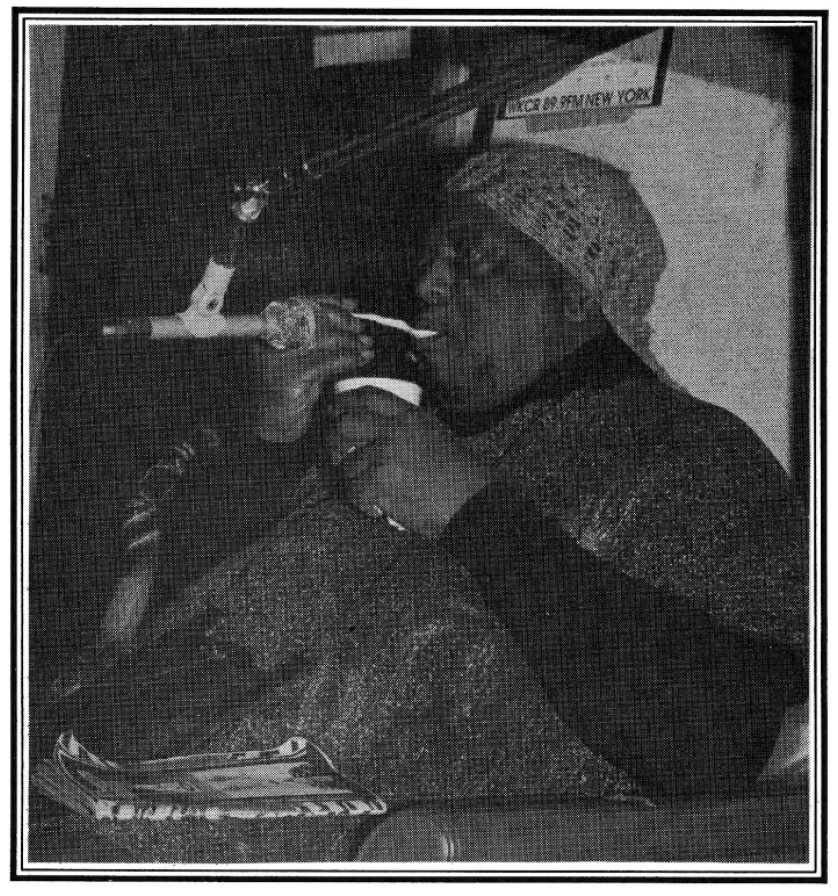With great pleasure, we welcome free jazz legends Peter Brotzmann and Hamid Drake for an interview about their upcoming set at Vision Fest 19. The two need no introduction; Brotzmann (saxophone) has been a leading innovator in European free improvisation since the 60's, and Drake (drums) has been a close collaborator with him for over 20 years. We'll be meeting with the duo for a backstage interview at Roulette just a few hours before their trio set with William Parker on Thursday night. The recording will then be played back on Friday's Out To Lunch for your enjoyment. Listen!
Peter Brötzmann (born March 6, 1941 in Remscheid, Germany) is a German free jazz saxophonist. Brötzmann is among the most important European free jazz musicians. His rough, lyrical timbre is easily recognized on his many recordings. He studied painting in Wuppertal and was involved with the Fluxus movement, but grew dissatisfied with art galleries and exhibitions. He has not abandoned his art training, however: Brötzmann has designed most of his own album covers. He first taught himself to play various clarinets, then saxophones; he is perhaps the only jazz musician to play the tárogató. Among his first musical partnerships was that with double bassist Peter Kowald. For Adolphe Sax, Brötzmann’s first recording, was released in 1967 and featured Kowald alongside drummer Sven-Åke Johansson. 1968 saw the release of Machine Gun, an octet recording often listed among the most notable free jazz albums. One critic has written Machine Gun offers “a heavy-impact sonic assault so aggressive it still knocks listeners back on their heels decades later.” The logistical difficulties of touring with an octet resulted in Brötzmann eventually slimming the group to a trio once again, the most notable and lasting one with Han Bennink and Fred Van Hove. In the 1980s, Brötzmann flirted with jazz fusion and noise rock in the avant-garde supergroup Last Exit.
Brötzmann has remained active, touring and recording regularly. He has released over thirty albums as a bandleader, and has appeared on dozens more, with groups such as his Die Like A Dog Quartet (with Toshinori Kondo, William Parker and Hamid Drake.
Hamid Drake (b. 3 August 1955, Monroe, Louisiana, USA) studied drums extensively, including eastern and Caribbean styles. In 1974 he began what was to be a long-term musical relationship with Fred Anderson. In the late 70s, Anderson introduced him to George Lewis and Douglas Ewart. His most significant percussion influences, Ed Blackwell and Adam Rudolph, date from this period. The latter, who was a childhood friend, became another continuing collaborator and they appeared together in numerous contexts, including Anderson's 1979 The Missing Link. Don Cherry, who Drake first met in 1978, was another continuing collaborator. Also in the late 70s, Hamid Drake became a member of the Mandingo Griot Society, appearing on the group's first album. For many years Hamid Drake provided deftly inventive rhythmic support to forward thinking musicians such as pianist Borah Bergman and Peter Brötzmann, with whom he played in a quartet alongside William Parker and Toshinori Kondo. Others with whom Drake has worked over the years are Marilyn Crispell, Pierre Dorge, Norwegian pianist-composer Georg Gräwe, Herbie Hancock, Misha Mengelberg, Pharoah Sanders, Wayne Shorter, Malachi Thompson, fellow percussionist Michael Zerang and most notably with Kent Kessler and Ken Vandermark in the DKV Trio. With these diverse artists, playing in a broad range of musical settings, Hamid Drake comfortably adapts to north and west African and Indian impulses as well as reggae and Latin. Among drummers he has cited as being influential, aside from Blackwell and Rudolph, are Philly Joe Jones and Jo Jones. It was through the latter's broad-based concepts that Hamid Drake was impelled to explore earlier forms of drumming that had been drawn into jazz before the advent of free jazz. He also frequently plays without sticks, using his hands to develop subtly commanding undertones. His tabla playing is also notable for its subtlety and flair.

